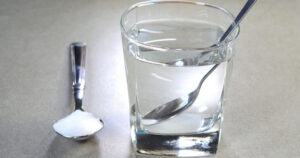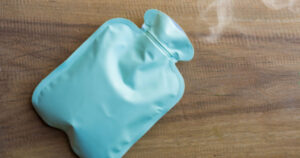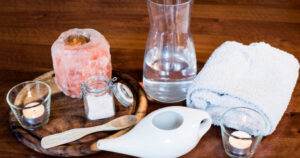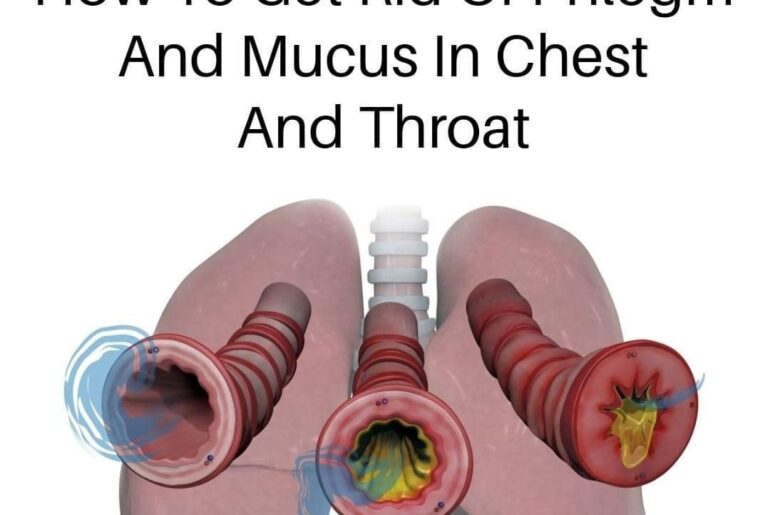The phlegm that lingers in the chest and throat for a very long time after a cold is probably one of the worst things about his cold. Although it usually clears up gradually, it can seriously affect your life. It can cause breathing difficulties and a chronic cough, especially during exercise.
In general, it just makes life less enjoyable. It’s about what steps we should take. Fortunately, there are some things you can do at home to help clear up mucus and help you breathe better.
How to remove phlegm and phlegm from the throat and chest at home
Thick and viscous mucus is secreted by the lining of our respiratory tract, which includes the throat, nose and lungs. By trapping dust, bacteria and other foreign particles, it plays a vital role in keeping our airways clean and moist.
Primarily
On the other hand, a build-up of mucus in the throat and chest or excessive mucus production can be very uncomfortable. Breathing problems, chronic cough, sore throat and congestion are possible side effects. Mucus buildup can be caused by a number of common colds, allergies, respiratory infections, smoking, and inhalation of irritants.
Methods of treating phlegm and phlegm at home
Before turning to over-the-counter and prescription drugs to clear up mucus, consider these natural remedies. You can make them at home and they are simple, safe and straightforward.
1. Drink lots of water

If you stay hydrated throughout the day, the mucus can be thinner and easier to expel. Excellent options include herbal teas, warm broths, soups, and water.
2. Use salt water to gargle

Gargle several times a day with a solution of half a teaspoon of salt and warm water. This relieves discomfort and reduces mucus in the throat. (2) Perform the following steps when gargling with salt water:
Mix 1/2 to 3/4 teaspoon of salt with one cup of water. The ideal water is warm because it dissolves the salt faster.
A smart option is to use filtered or bottled water that does not contain unpleasant chlorine.
Drink the mixture and turn your head back a little.
Do not swallow the mixture; gargle it down your throat instead.
After 30 to 60 seconds of gently blowing air from your lungs to gargle, spit out the water.
Repeat as needed.
3. Steam inhalation

Inhaling the steam helps to thin and moisten the mucus, making it easier to cough up. You can use a steam inhaler to do this or lean over a sink of hot water with a towel over your head.
4. Comfortable compression

Applying a warm compress to your neck or chest can help reduce mucus build-up and relieve congestion. After wringing out the excess water and heating it with hot water, just place a fresh towel on the affected area.
5. Lemon with honey

Add a spoonful of honey, some fresh lemon juice and warm water or herbal tea. While lemon breaks up mucus, honey soothes the throat. Garlic, ginger, and hot peppers like cayenne pepper can also help thin mucus and promote mucus passage. (3)
6. Use a moisturizer

A humidifier’s ability to add moisture to the air can help clear mucus from the throat and chest.
To prevent bacterial growth, clean the humidifier regularly.
7. Use of nasal mist

Congestion can be reduced and excess mucus removed from the nasal passages by flushing them with saline or using a neti pot.
8. Avoid irritants

Avoid irritants that worsen mucus production and congestion, such as air pollution, cigarette smoke, and strong chemical odors.
What to avoid
It is important to understand some “don’ts” that can worsen the condition to loosen mucus in the chest and throat:
Avoid smoking and second-hand smoke as they could worsen breathing problems and cause mucus production.
Dairy products should be avoided as they can thicken mucus and make it difficult to evacuate.
Avoid excessive sugary foods and drinks, as this can worsen inflammation and mucus production.
Rebound congestion can result from using decongestant sprays and nasal drops for extended periods of time without medical help.
Since coughing is the body’s natural method of clearing mucus and phlegm from the airways, avoid overuse of cough suppressants.
As a reminder, if your symptoms worsen or persist, it is always recommended to seek a proper diagnosis and treatment plan from a healthcare professional.
By following these home remedies and avoiding specific triggers, you can effectively control and relieve phlegm and phlegm in the chest and throat, improving respiratory health and overall well-being.
Managing phlegm and phlegm in the throat and chest can be challenging, especially after a cold. While discomfort is common, there are effective home remedies that can help relieve these symptoms and promote better breathing. By incorporating simple strategies like staying hydrated, using salt water gargles, inhaling steam, and applying warm compresses, you can significantly relieve congestion and restore comfort.
Plus, natural ingredients like honey and lemon can not only soothe your throat, but also help dissolve mucus. Using a humidifier adds moisture to the air and further helps in removing mucus. It is important to be aware of irritants such as smoke and certain foods that can worsen mucus production.
However, if your symptoms persist or worsen, a medical consultation is necessary to rule out any underlying diseases. Proactive steps at home can improve airway health and return to normal. Remember that listening to your body and adjusting your habits will ultimately improve your overall well-being. By implementing these strategies, you can reclaim your comfort and enjoy a cleaner, healthier respiratory system.




